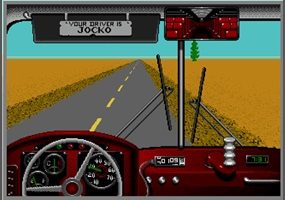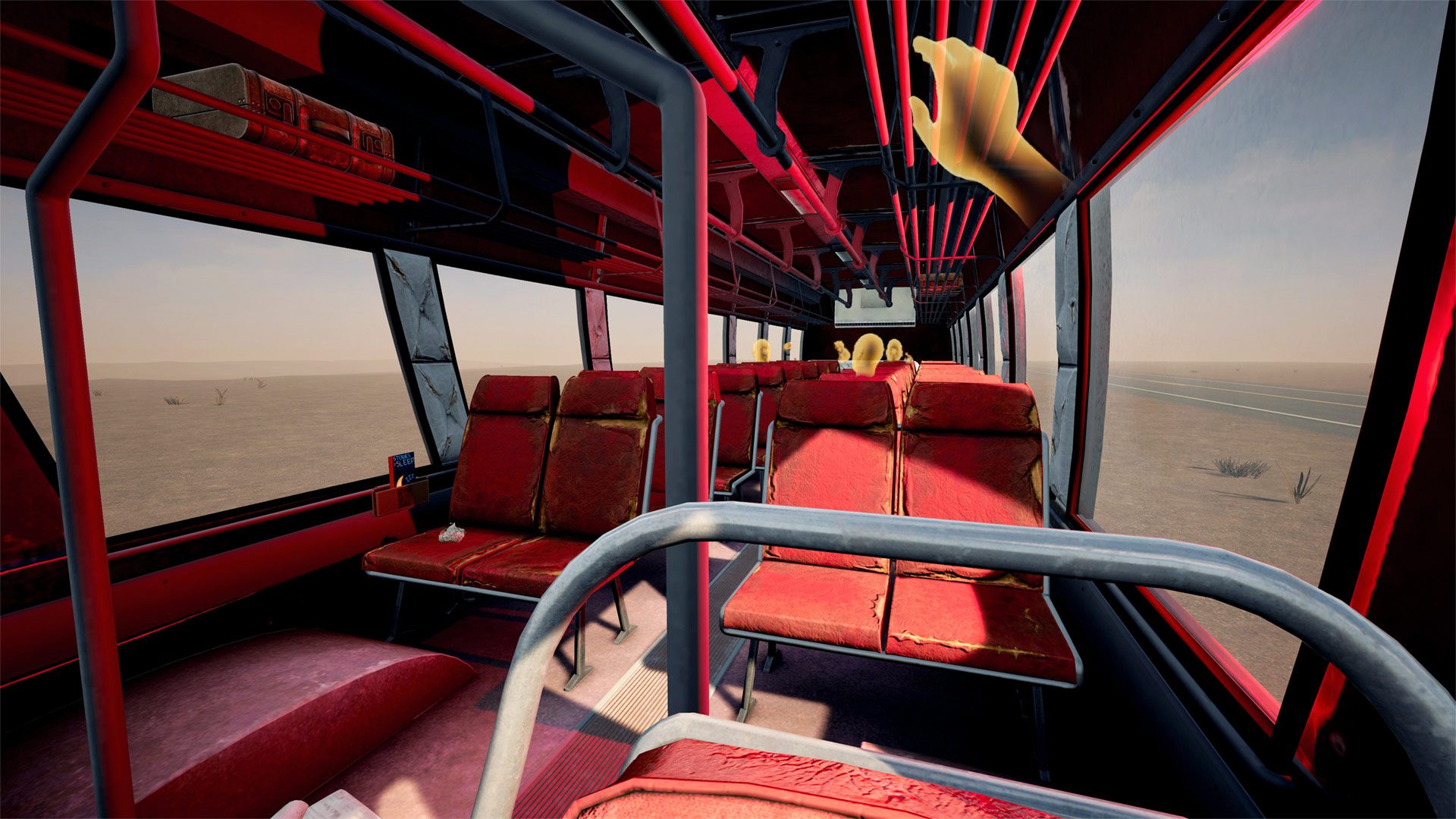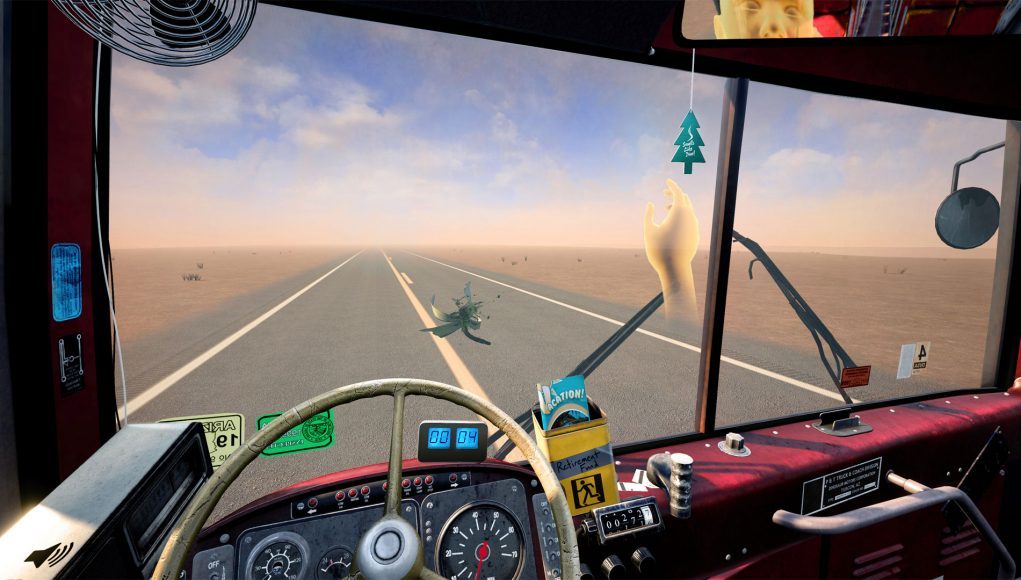Penn & Teller’s Desert Bus VR is finally here, letting you take the wheel of a crappy old commercial bus for a mind-numbing 8-hour trip from Tuscon to Las Vegas. It’s not great (at all), but it’s built for a truly noble cause.
You may ask yourself: “why would I want to simulate driving an old bus at the top speed of 45 miles an hour through a depopulated desert road for 8 hours straight?” The quick answer: you wouldn’t.
Originally created in 1998 as a mini-game to the never-released Sega CD game Penn & Teller’s Smoke and Mirrors, Desert Bus is less of an actual game and more of a commentary in response to the famous ’90s brand of zealotry against video game violence that dominated political discourse at the time, spearheaded by the likes of Jack Thompson, Janet Reno, and Hillary Clinton to name a few. The 2D version was originally built to highlight the ridiculousness of the idea that popular video games of the time adequately prepared players for real-world interactions (martial arts in the case of Mortal Kombat, and shooting guns in the case of Doom) and that not all video games are designed to ‘corrupt the youth’. Despite its political beginnings and failure to launch due to the game studio’s bankruptcy, Desert Bus garnered cult-status as it was later released on a number of platforms.
The new VR version was brought to life by Borderlands developers Gearbox Software, making it their first VR production.

Now that times have changed and VR developers strive to make their experiences more realistic, it’s hard to say if the VR version is trying to revitalize Penn Jillette’s hypothesis. While I haven’t done the full 8-hour drive, I found it purposely misses out on some more common aspects of VR driving simulators in favor of presenting the player with a less realistic, but decidedly more boring experience.
Because it doesn’t make the same effort to present the player with realistic driving, like one you might find in Euro Truck Simulator 2 (2013), it presents a bit of a bad argument if it’s truly trying to prove that games can’t provide you with the skills applicable to the real world. Jillette himself rehashes his hypothesis during an AM-style radio transmission that plays at the beginning of the drive, but doesn’t acknowledge that it’s a little less defensible in the era of virtual reality.

Just like the original 2D version, in VR you can go only go left, right and speed up to a max of 45 mph. The wheel pulls slightly to the right, so you’ll have to recorrect every few seconds to keep yourself on the road. Going off the road will overheat the engine, and its game over. Making it all the way to your destination—some 360 miles away—awards you with a single point.
The VR version uses the HTC Vive and Oculus Rift’s respective motion controls, but annoyingly maps acceleration to the left trigger. Steering is done either manually or through trackpad/thumb stick, the later of which is way too jerky for comfortable play in VR. The render distance isn’t great either, making you feel like you’re more of a treadmill than in an actual desert. Although the bus itself is pretty attractive, it lacks some finer interactive touches you might find in a built-for-VR game like the car level from I Expect You to Die (2016).
Funnily enough, the game includes an online multiplayer mode which lets you ride along with others as either a driver or passenger. At the time of this writing I didn’t get a chance to play an online session, but I can imagine myself getting to know someone pretty well over the course of an 8-hour drive.

While all of its flaws bear mentioning, it’s hard to knock a game that’s both entirely free and was built for charity, as Jillette helped renew the game for the volunteer organization Desert Bus for Hope that holds a titular annual event to raise money for the game-focused Child’s Play Charity. In a recent telethon-style event, the organization raised $650,250 with a total of 158 hours logged behind the wheel.
Even though it’s boring in all the wrong ways, if it can impact positive change in the world for even one person, it’s a resounding success that we can only hope to see more of in the future.
The game is out now for free on Steam for Rift, Vive and traditional monitors. You can download it here.







